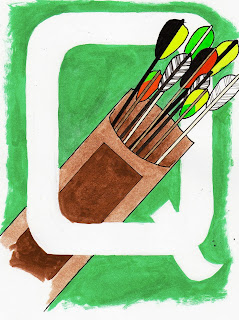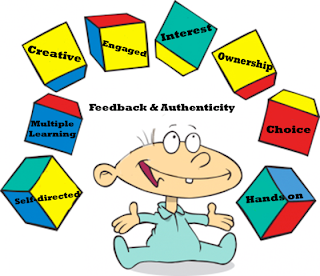This is the blog that we had to write as a group and our group name is Team Tokyo. If this is interesting also check out my partner's Jennah's or Aaron's blog page!
Brian Crosby, from the video Back To The Future, showed me how he has innovated the use of education to include experiments, technology and networking to not only meet the standards, but to educate and engage the students in their own education. He reached out to others in the use of blogs. Not only the blogs his students read, but blogs twice removed from his typical blog circle. In this way, he exponentially increased his student’s networking and influence.
At the start of the video, he showed how his students were unsure of the city they lived in, throughout the video he showed how he made those same students, not only aware of their city, but globally aware. Perhaps the most touching element was when they brought a typical issue of health concerns that keeps most students at home, into the classroom. Celeste was struggling with cancer and through the use of technology, she wasn’t just a student who fell through the red tape cracks. Crosby set up video sessions that kept her involved in the classroom environment. This type of interaction would have certainly kept up her moral and helped aid her recovery. “Now we are including Celeste in a regular day in school.” This simple statement from one of the students foreshadows Crosby’s follow up statement “not only are we learning but we are learning to change each others lives”.
I wish I could do experiments in a class. As it is, P.E. majors have other duties. I have considered sending a balloon into the atmosphere in the past few years on my own. While I haven’t yet spent the time or money to learn and invest in this fun and simple idea, I’m sure, without any doubt, that those kids involved in that experiment won’t soon forget it.
Paul Anderson’s video on Blended learning brought an interesting concept to bare, QU.I.E.V.R.S. (QUestion, Investigate/Inquiry, Video, Elaboration, Review, Summary quiz) In his AP BIology class. He starts a class with a Question and a Hook. In the video he used an Euler’s disc to both bring up the question, and by his method of presentation it creates and sets the hook all on it’s own. He goes through one of his lessons on evolution and shows how he uses this method of QU.I.E.V.R.S. It’s a very student driven learning experience. He gives the students the content and informs them of what they are to know. If they haven’t met those standards by the time the quiz comes around, they are required to figure out what they are missing. He allows them to stumble on their own a few times before he intervenes. This self exploration and requirement to be self critical is essential to be an active learner. Again, if I were teaching a science class, I would steal a page from his play book. Self determination of education, is possibly one of the best things that a teacher can give a student.
Mark Church talked about the students using Critical thinking. His idea was for the students to think of a banner from the video that they watched earlier in the week. In my opinion, I think that this video was talking about how the students should brainstorm from stories things that they have listened too.
For example, in the video the whole class reads a book and now they have to think and brainstorm on what the book was about. The teacher gave the student a piece of paper to make a banner about the story something that stands out to them. The question that video asks in the middle is “What’s it all about?”
This video Sam Pane, a 5th grade teacher was talking about how to build your own superhero on the computer. This video talk also talked about Super Digital Citizen, I thought that this video was very good. I especially liked the quote from Spiderman “With great power comes great responsibility.”
I also liked how the students built their own superhero and made a comic out of pictures of themselves and the superhero they built. Another thing that I learned in the video was how to use the internet safely.
In the video Project Based Learning, the viewer visited a school in Canada in which they integrated History, Language Art, and Information Processing. Instead of having three separate class times, these three classes met together with all three teachers, and crossed-over subjects. By integrating each of these three subjects within each other, it created much more time for students’ ideas to develop. It also gave the teachers more time to spend time with each student to assist their developing ideas. I learned from the teachers in this video that it is extremely important to get advice from a variety of different people because this enables your ideas to fully develop.
In the video Roosevelt Elementary’s PBL Program, the teachers explained how Project Based Learning presents in-depth, “real world” problems and allows students to research their answers. It also allows students to practice public speaking at a young age, which can help develop their skills and let them practice. I learned from the teachers in this video that through PBL you can bring your community into the classroom and it is a great benefit to the students. It also creates curriculum integration, as the prior video demonstrated. Curriculum integration builds background knowledge and helps students in all areas.






Good group post. Be sure to always look back at your blog posts, though. It looks like there are a few places where there should be links, but they are not working. Check your codes and URLs :)
ReplyDeleteHi Leanna,
ReplyDeleteYour post on Paul Anderson's video was right on it. I wasn't quite sure what to think of his way of teaching but you kind of broke it down a little better so I could get to what his goal really was. I can honestly say that if I had to take his class, I would probably hate it, but I know that I would probably never forget what I learned. You said,"If they haven’t met those standards by the time the quiz comes around, they are required to figure out what they are missing. He allows them to stumble on their own a few times before he intervenes." That is the part that would help me remember what I learned. I have noticed in school and in life, any time I mess up, I can remember the event better!